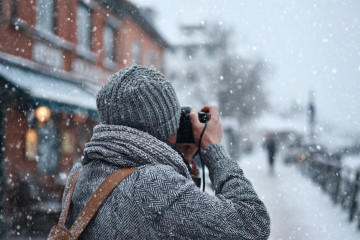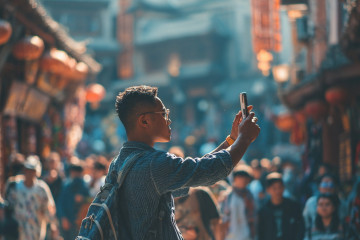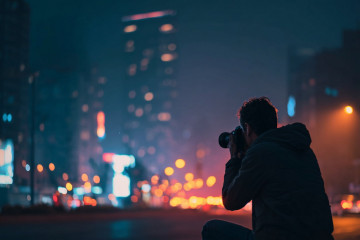There’s a time and place for a long moody shadow or a short harsh shadow in product photography. but there are plenty of times when that shadow just clashes with your vision for your photo. because of the nature of photography lighting it can be challenging to eliminate unwanted shadows during the shoot. we’ll cover all the ways it can be done (and for every budget) in the studio or in post-production! pro tip: considering your lighting options should be done during the prep step to avoid having to pause and readjust during your shoot.
what is causing shadows?
*jazz hands* science. photography is all about manipulating and capturing light. you want the side of the product you’re photographing to be well lit. but the other side of that product will now have a shadow. this isn’t avoidable! but the art of photography involves manipulating your scene to capture it in the best way for your products. as a photographer — amateur or professional — you will be contending with shadows. now that you’ve accepted this fact, it’s time to choose your favorite way to eliminate them.
tip #1: use a lightbox
A lightbox is exactly what it sounds like. it’s a five sided box with typically bright white on all five sides. the sixth side is the opening from which you’ll shoot your photos. the presence of the light and the brightness of the inside of the box create a diffusion of light and a clean white background for your images.
HERE’S WHAT YOU’LL NEED:
Lightboxes can be purchased online in a variety of budgets. consider how much you’d like to spend and the size you’ll need for your product. if you have small products (like jewelry for example) you can get away with a very compact lightbox.
tip #2: replicate soft light
Soft light is the diffused light that pours through a window when it’s sunny but the sun isn’t directly shining in. this is one of the best light sources if you have it: natural indirect light. if you can’t time your photo shoot around natural light: you can still achieve it! if the light is harsh — try putting up a sheer sheet or piece of paper to allow some light through but block the harshness. conducting your photo shoot near a bright window and using curtains to diffuse the light as needed is one of the cheapest ways to achieve great lighting and eliminate the harshest shadows.
WHAT YOU’LL NEED:
you’re in luck! you’ve probably got the materials needed for this already. try a piece of butcher paper. wax paper. a thin sheet. or a sheer curtain. after you get the timing down (what time of day does your window get the brightest light?) all you need to worry about is placing your product at the right angle and proximity to your light.
tip #3: avoid flash
Flash is NOT your friend. the flash from a camera is too concentrated. too bright. and too harsh. if you need bright light — use the other tips in this article to create that brightness and turn your flash off. while it saves time and money to use flash and not purchase lighting equipment — it will not save you time later when you’re editing the shadows and glare. and it certainly won’t save you money in the long run to have undesirable product photos.
tip #4: bounce light back toward light source
Reflectors are a common photography tool for bouncing back light. but here’s a secret: a white poster board can work just as well on a budget! there isn’t a hard and fast technique for bouncing back light: you’ll need to play with the angle. you want your reflector or poster board to bounce light from the light source directly back onto the spot where the shadow was cast. test shots will help you visualize this!
WHAT YOU’LL NEED:
You can purchase anything from a cheap piece of poster board to a professional reflector online. start with the lower budget option to make sure this method is helpful to you and then advance your equipment from there!
tip #5: utilize two light sources
Two light sources will work similar to the technique above. you will also need to play with the positioning and intensity of the lights to find what works best for your shot. however — the risk with two light sources rather than a reflector is that two lights can cause the image to appear too blown out. they can also result in — not one — but TWO shadows to contend with.
tip #6: digitally eliminate with editing apps
If you’re tech savvy and don’t want to spend the time/budget on the equipment above: this option might be best for you! if you’re going to edit shadows from your image after the shoot — try to make the shadows as simple as possible in your product photos. for example: editing out shadows from a bunch of props and dynamic backgrounds will be a lot more time-consuming in post-production than if you had a white background. pssst— there are tons of excellent photo editing apps out there for every budget.
WHAT YOU’LL NEED:
However — Lightroom can be used to edit color and light in order to reduce shadows, not remove them completely. for eliminating shadows from the shot entirely: you’ll need to use an app that allows more photo manipulation like Photoshop.
tip #7: play with manual settings on your camera
There’s no setting on your camera that will magically eliminate shadows. but working in manual mode can assist you in capturing sharp photos with the right white balance so that less work is required in post-production.
SETTINGS TO KEEP IN MIND:
- shutter speed between 1/60 and 1/200
- reduce depth of field
- play with white balance


